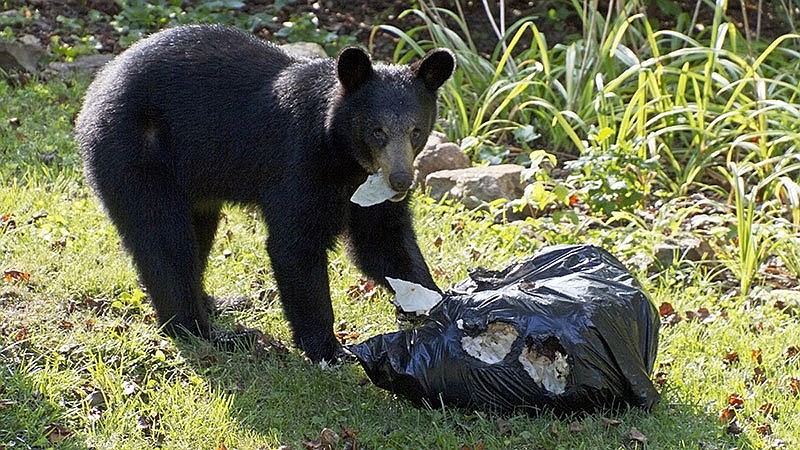HOT SPRINGS -- In a state that was once known as "the bear state," black bears continue to make a comeback in Arkansas after a long-term reintroduction effort.
Myron Means, coordinator of the Arkansas Game and Fish Commission's large carnivore program and a leading bear biologist, discussed those efforts and the state's black bear harvest as the guest speaker at Wednesday's Hot Springs National Park Rotary Club meeting at the Arlington Resort Hotel & Spa.
"To kind of give you an idea of what our harvest looks like, last year was a record harvest year for Game and Fish," Means said. "Our bear population was doing great and our harvest reflects that.
"As many of you probably know, Arkansas was nicknamed the 'bear state' historically, because it was thought at the time of settlement we may have had as many as 50,000 black bears in this state," he said. "Well, black bears were almost extirpated from the state through the early settlement period through unregulated market money, of which the commodity was their fat -- not necessarily their fur, what most people think -- but their fat."
According to a Game and Fish Commission report in February, bear hunters in the state in 2020 broke 2018's record of 577 with 665 black bears. Means said this was due to the fact that there was a sparse mast crop across the state and the fact that the commission increased the bear zone quota from 345 bears to 500 bears.
He said the project Game and Fish managed from 1958 to 1968 reintroduced 254 bears from Minnesota and Manitoba, Canada. They were put in two sites in the Ozarks and one site in the Ouachita National Forest.
"And that reintroduction effort is still, to this day, considered the most successful reintroduction of large carnivores in history in the world," he said. "So that's something that Game and Fish is really proud of. It's kind of a flagship species for the Game and Fish. Their reintroduction effort was so successful that in 1980 we actually reopened bear season in the state. So this marked the 41st bear season we've had in modern-day bear season."
Means said that of the current bear zones in the state, 98% of the harvest comes from Zones 1 and 2 -- the Ozarks and the Ouachitas.
As the opportunity for good bear hunting continues to grow, Means said the Natural State is quickly becoming recognized by hunters across the country who want to come here to hunt.
"I have people from all over the country calling me every year wanting to know about coming to Arkansas to bear-hunt," he said.
Bears, Means noted, are "apex" predators and ultimately help provide a natural balance in the ecology of the landscape. With the Game and Fish Commission being a conservation agency rather than a preservation agency, it is tasked charged with managing the resources of the state for the maximum enjoyment of the people.
Game and Fish monitors the state's bear population each year through den visits and various research projects. One such project, he said, is the Gulf Coastal Plains study in hopes that there can be a bear season in the southeast part of the state in 2022.
Regarding attacks, Means said they are rare and he advised that the best thing to do when coming into contact with a bear is to let it know you're there while giving it space.
"Black bears, believe it or not, are pretty timid animals," he said.
Means said a bear that has become accustomed to relating food to people can become a public safety threat. Habituated bears, he noted, pose a threat and Game and Fish has a no-tolerance policy for this.
"A wild bear that you encounter out in the woods is by no means a public safety threat," he said.
"A young bear that gets trapped down here in the middle of town in Hot Springs because he took a wrong left turn is by no means a public safety threat. Now people might hurt themselves trying to get away, you know, but those are not public safety threats," Means said.
"Any time you have these little hanging bird feeders, you know, they can be attractive, especially to young [male bears] that are dispersing out," he said. "Mom kicks them out of the nest when they're a year and a half old, and they really just kind of roam around for about three or four years until they become mature enough to establish their own territories. So they're kind of like the wandering 13-year-old out on the street. You know, they don't really know better; they're going to get into trouble; you know, so that's just the nature of young subadult bears."

